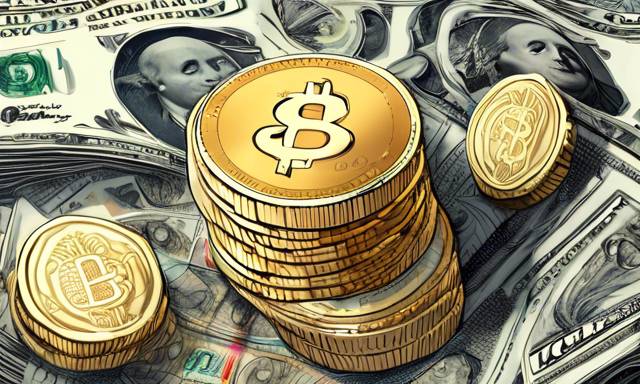Stablecoins: Empowering Adoption and Extending U.S. Dollar Influence 🌍💵
The latest findings highlight the growing prominence of stablecoins in enhancing the U.S. dollar’s global appeal, particularly in nations lacking access to this currency. This year, a report backed by Visa emphasizes how stablecoins have emerged as essential monetary tools beyond mere trading and speculation within the cryptocurrency landscape.
Key Findings: Stablecoin Usage and Adoption 📈
Authored by Castle Island Ventures and Brevan Howard Digital, the comprehensive report illustrates the increasing acceptance of stablecoins, marking notable growth during challenging crypto market conditions. Crucial insights reveal that:
- In August alone, stablecoin transactions soared to $461 billion, representing the third-highest volume recorded.
- This data excludes artificial activity generated by blockchain bots, showcasing genuine user transactions.
- The substantial increase in stablecoin use occurs despite the overall downturn in the crypto market over the past two quarters.
Global Perspective: The Dollar’s Reach Expands 🌐
According to Nic Carter, a general partner at Castle Island Ventures, stablecoins significantly facilitate the extension of the U.S. dollar, especially in regions where access to USD is minimal. Notably:
- Approximately 98.97% of all stablecoins currently in circulation are pegged to the U.S. dollar.
- The dominance of Tether (USDT) is clear, accounting for 69% of the entire stablecoin market, which is valued at around $170 billion.
Survey Insights: User Behavior and Preferences 📊
The report includes responses from a survey conducted with over 2,500 individuals across five developing economies: Nigeria, India, Indonesia, Turkey, and Brazil. Key findings from the survey shed light on consumer behaviors:
- 69% of the respondents had exchanged their local currency for stablecoins.
- Carter interpreted this trend as an influx of currencies into the dollar system, rather than an internal shift between dollar-based instruments.
- 39% utilized stablecoins for purchases, while another 39% employed them for remittances to family abroad.
- About 72% of participants expressed intentions to increase their use of stablecoins moving forward.
Advantages of Stablecoins Over Traditional Banking 💰
The survey responses indicate a clear preference for stablecoins over conventional banking options in respective countries. Respondents cited multiple motivations:
- Higher yields offered by stablecoins.
- Greater efficiency in transactions.
- Reduced risks of governmental intervention compared to traditional banks.
Nigeria emerged as the frontrunner in stablecoin acceptance, with 75% of its respondents reporting a very favorable outlook towards these digital currencies.
The Future of Currency: Predictions and Trends 🔮
Carter expressed confidence that shifts towards crypto-dollarization are imminent. He suggested that such transformations are already underway in Nigeria, despite a lack of governmental support. He emphasized:
- There is a significant demand for digital dollar alternatives among end users.
- Currency substitution is expected to progress irrespective of political barriers.
Hot Take: The Transition towards Digital Currency 🌟
As stablecoins continue to gain traction, their influence on global banking systems and currency exchanges becomes increasingly evident. The broad acceptance and practical use of stablecoins in various countries emphasize a remarkable shift in how digital currencies are perceived and utilized. By bridging the gap to the U.S. dollar, these instruments empower users worldwide, heralding a new era in financial transactions and enhancing economic resilience in regions where traditional banking is insufficient.





 By
By

 By
By

 By
By